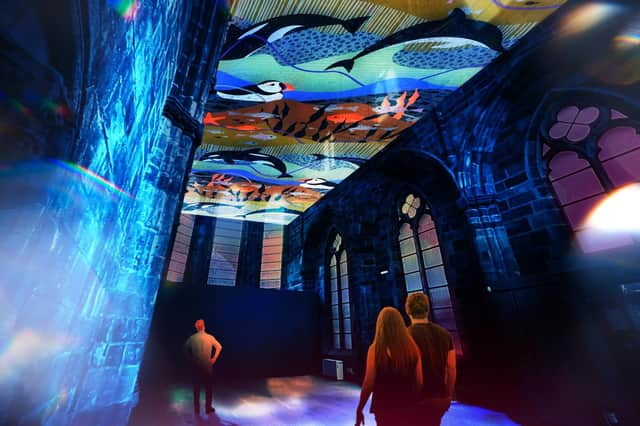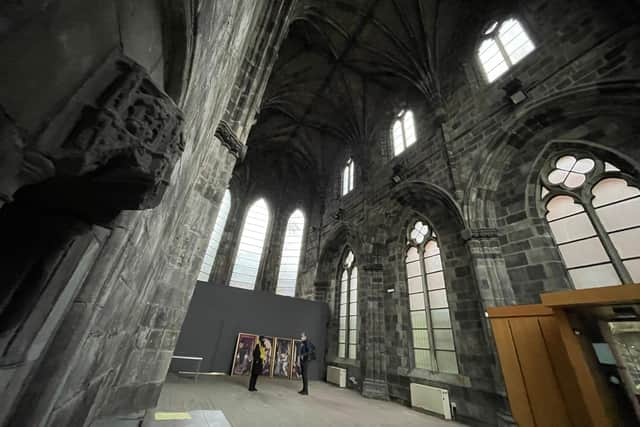One of Edinburgh’s oldest buildings to host culture project inspired by climate crisis


Trinity Apse, which dates back more than 500 years, will provide the backdrop to a week-long installation inspired by the staging of the COP26 summit in Scotland.
Artwork by designer Hazel Dunn will be projected onto the gothic architecture of the surviving elements of a church building that had to controversially make way for an expansion of Waverley Station in the mid-19th century.
Advertisement
Hide AdAdvertisement
Hide AdVisitors will hear short stories created by three writers – Anna Fleming, Andrés N. Ordorica and Mara Menzies – along with a soundtrack by composer Calum Paterson.


The project is the latest incarnation of Message From The Skies, a collaboration between the city’s Hogmanay and book festivals, which has commissioned work by some of Scotland’s leading writers and artists in recent years.
The facade of historic buildings and landmarks across the city have previously been lit up to showcase the Message From The Skies commissions, which have been funded by the Scottish Government.
However, the latest work, entitled Earth Calls, has been designed to be experienced inside the little-known building, which is tucked away off the High Street section of the Royal Mile, on Chalmers Close.
It will be able to be experienced free of charge between 19 and 25 January 2022, from 5-9pm.


Underbelly directors Charlie Wood and Ed Bartlam said: “There isn’t a more vital time for our Message From The Skies to focus on climate than now. Scotland has been at the forefront of the world’s climate action and our artists have been working together to share a message from Scotland that sparks imagination and inspires the world.”
Book festival director Nick Barley said: “We have once again enjoyed suggesting some wonderful Scottish writers whose words will light up the city in the dark days of January.”
Advertisement
Hide AdAdvertisement
Hide AdScottish culture minister Jenny Gilruth said: “It’s great to hear that Scotland’s COP26 legacy will live on through Message from the Skies 2022. For the duration of January, the artist’s messages will be projected in the heart of Scotland’s capital, reflecting on our relationship with Scotland’s land, sea and air.”
The original Trinity College Kirk was founded by Queen Mary of Guelders, the widow of King James II, following his death during the siege of Roxburgh Castle in 1460. It was located in the Waverley Valley, between the Old Town and Calton Hill, although the original concept was never completed.


After the Reformation, ownership of Trinity College Kirk was passed over to the town council – a decision that would prove fateful in 1848, when the North British Railway Company purchased the site to expand Waverley Station, which required the removal of all original buildings.
The company agreed to fund its relocation, only for the work to be delayed by disputes between the council and the kirk over where it should be rebuilt. By the time a site on Jeffrey Street was chosen, many of the carefully-numbered stones from the original building had either been stolen from their unprotected home on Calton Hill or become badly damaged.
Although a new extension allowed the church to reopen in 1872, it was demolished in the 1960s, leaving only a small section of the original gothic architecture, which is now protected as an A-listed building by Historic Environment Scotland, behind.
Comments
Want to join the conversation? Please or to comment on this article.
